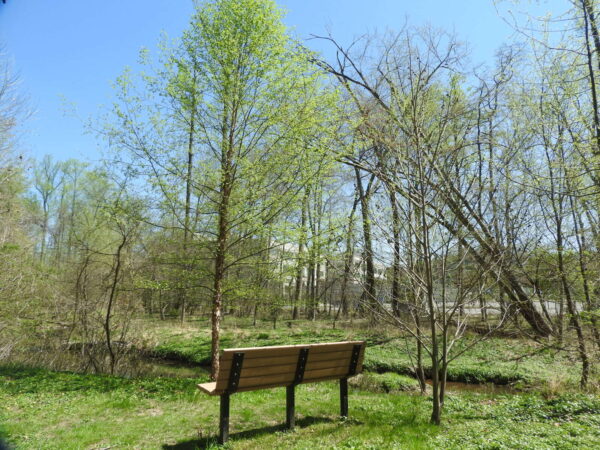
In an effort to reverse a decrease in the tree canopy, Vienna’s government is taking another step towards tree preservation and plantings. Last week, the town council discussed proposed amendments to enhance tree canopy, including moving forward with a tree conservation ordinance and the possible creation of an independent tree commission.
Town Attorney Steven Brigalia said the tree conservation ordinance would put the town in line with Fairfax County, which has had conservation rules since 1990. He said it would require builders to indicate which trees can and cannot be saved before cutting them.
“They are still allowed to develop their property,” Brigalia said. “But they have to upfront identify the trees and give justification if they’re going to take out trees, and then they still have to meet a canopy requirement.”
Under the town’s current canopy requirements, developers are only required to replace eliminated trees to meet canopy standards. Also, for single-family residential lots, builders must provide enough trees to cover at least 20% of the lot after 20 years. A conservation ordinance would increase that 20-year standard to 25%.
Brigalia said the town would have to provide provisions if they increase the standard to 25%. For example, if a developer says they are unable to preserve a 25% canopy, they would pay into a tree bank or tree fund.
There’s also a requirement for allowing additional credits for the developer if they provide certain types of trees.
Brigalia also hopes to strengthen the town’s tree board.
“There’s not a lot of authority for what they can do except advise the town on good tree planning processes and advise the town on planning on public property,” he said, adding that the board could eventually give recommendations of where to plant trees with money from the tree fund.
Councilmember Howard Springsteen said he hadn’t heard of the tree board in his 14 years of service.
“I never heard of it, so I rather have a tree commission that reports to council,” he said.
Springsteen also said residents are starting to voice concern about the town’s tree coverage, prompting the need for the council to act according to council member Ray Brill.
“We need to set up something separate, that focuses on tree canopy if, in fact, we believe it’s an issue. I personally believe it’s an issue, and we need to focus on it and get it done and get it done,” Brill said.
The council voted to refer the proposed ordinance to the planning commission for their consideration and review. A public hearing on the ordinance is scheduled for Oct. 23.
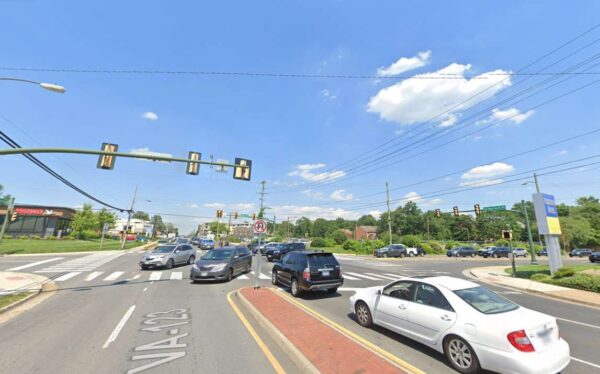
At a Vienna Town Council meeting this week it was revealed that, with any luck, work could start on overhauling one of the town’s most dangerous intersections before the year’s end.
The Vienna Town Council voted unanimously on Monday, Aug. 28, to approve construction services and management for improvements to the intersection of Maple Avenue and Nutley Street.
The Nutley Street intersection was one of three along Maple Avenue identified as a crash hotspot in Vienna.
According to the town’s website, plans for the intersection include enhanced signal technology that will let the town adjust and improve traffic flow in real-time.
“The Town is turning to enhanced signal technology to ensure that the wheels on vehicles along Maple Avenue and Nutley Street keep going round and round,” the website said.
The tech upgrade for Vienna’s signals system is estimated to cost $2.1 million, with some funding coming from a VDOT SmartScale grant and $170,000 in proffered contributions from the 444 Maple Avenue W project.
“The $2.1 million in adaptive technological upgrades, scheduled to be completed in 2024, will allow the Town to better manage congestion and enhance system efficiency,” the website said.
Transportation Engineer Andrew Jinks said the hope is to start physical construction later this year.
“We’re very excited about this,” said Mayor Linda Colbert said. “This is a long time coming, we’ve been talking about this for a long time.”
Image via Google Maps
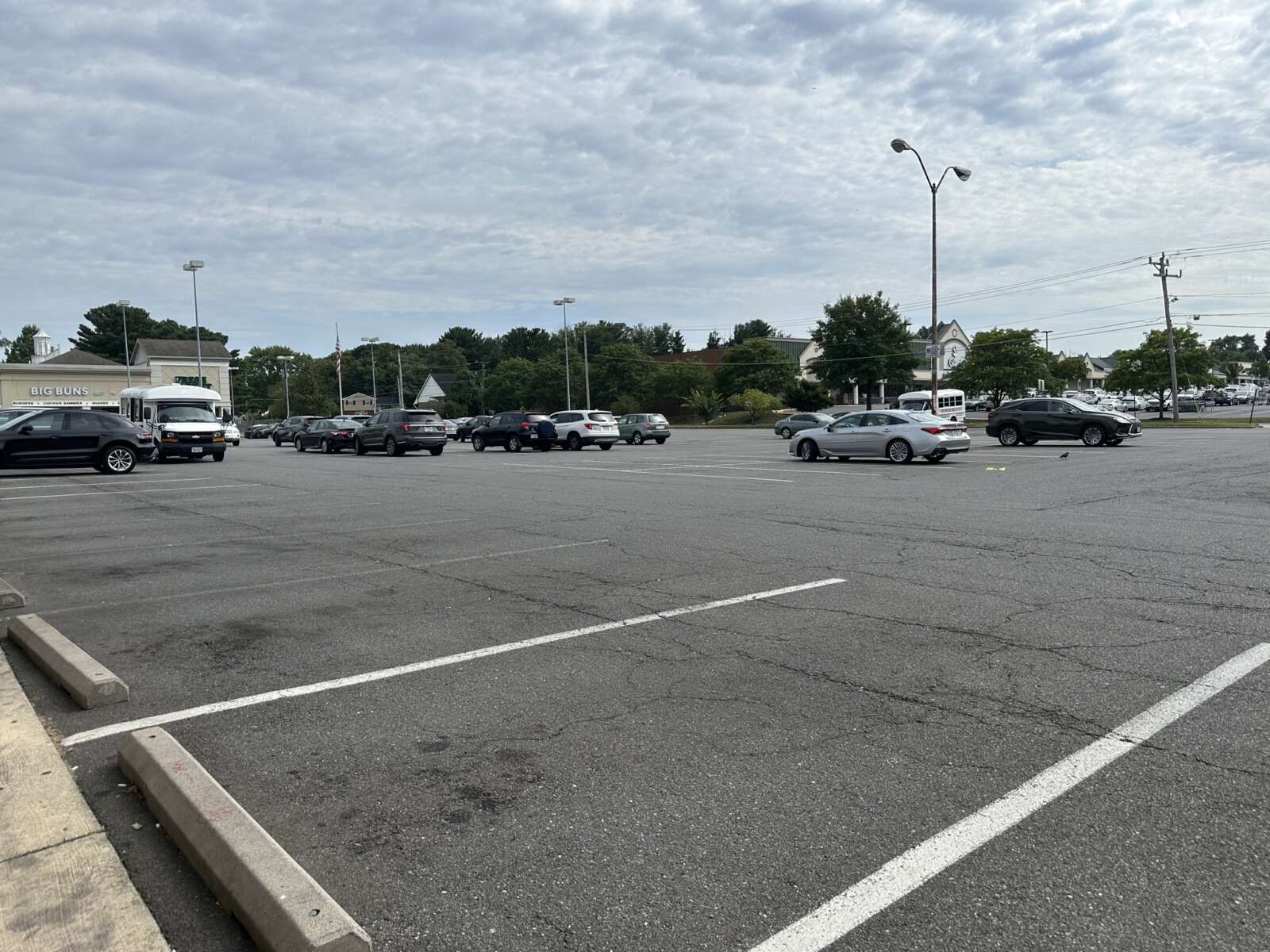
Vienna’s proposed new zoning code got a critical vote of confidence last week.
At its meeting on Wednesday (Aug. 23), the Vienna Planning Commission unanimously approved a letter to the town council recommending that it adopt the latest draft of a document three years in the making, one that will guide everything from development on Maple Avenue to the amount of space a backyard deck can occupy for the foreseeable future.
“I really appreciate all the work that everyone has put into reviewing this over the last year, and staff cannot be thanked enough for the immense lift,” Planning Commission Chair Jessica Plowgian said after more than three hours of discussion. “…We would not have done any of this without all of your efforts.”
The commission’s support did come with a number of caveats, as members identified issues in the 323-page draft that they feel should be reviewed either before or shortly after the council votes on Oct. 23.
One of the biggest unresolved questions is how the town will handle parking, which has long been a challenge for residents, visitors and business owners. With a separate study of parking supply and demand already underway, the draft code makes “minimal changes” to the existing requirements, the planning commission noted in its Aug. 24 letter to the town council.
“Parking is a significant concern for [the] Planning Commissioners,” the letter said. “…Planning Commissioners requested that parking requirements be reevaluated and Chapter 18 [of the town code] be amended as soon as possible after completion of the parking study.”
The commission also suggested that the town further evaluate comments from community members on outdoor lighting standards for residential and commercial properties as well as signs, potentially by hiring a consultant.
On some sections, the commission offered more specific critiques, suggesting, for instance, that driveways for single-family houses have at least a 5-foot radius.
Several commissioners questioned whether a 30% open space requirement is sufficient for multifamily residential uses, though two were “neutral” on the issue and one thought that standard seems adequate.
The commission was also split on whether to remove an eight-seat limit on temporary outdoor dining areas that are within 60 to 75 feet of a residential property. Part of an ordinance adopted in May 2022 to allow more flexibility for outdoor dining, the cap prohibited a patio for two Church Street restaurants that had drawn noise complaints.
One of those restaurants, Blend 111, closed permanently on Aug. 12.
While a majority of planning commissioners supported removing the seating limit, two members “raised concerns about an increase in the number of tables resulting in noise complaints,” according to the letter.
A section addressing ground-floor uses in residential or mixed-use buildings provoked a strong reaction. The current draft says only that a “lobby and similar areas which serve upper-story residential uses may be located on the ground floor but may not occupy the entire ground floor.”
“That’s wholly inadequate in my view,” Commissioner Matthew Glassman said.
To ensure mixed-use residential buildings provide “meaningful commercial space open to the public on the ground floor,” the commission recommended that more than half of the ground floor be dedicated to non-residential uses and the remaining space can be used for a lobby or other amenities for residents.
Some commissioners proposed going even further and requiring 75% of the ground floor be non-residential uses.
“There does seem to be pretty strong support for this particular issue, that everybody wants at least this change, if not a stronger change to what’s there,” Plowgian said.
The Vienna Town Council will review the planning commission’s recommendations, along with almost 700 pages of public comments, during its 8 p.m. meeting tonight (Monday).

Vienna’s tree canopy may be shrinking, but the trees still standing are actually doing quite well, a recently released town-wide inventory found.
About 88% of the 7,224 trees on public land examined by PlanIT Geo are in “fair” or “good” condition, the consultant told the Vienna Town Council when presenting its findings on June 20.
“I’ve looked at a lot of data across a lot of projects, and I don’t think I’ve seen one as good of health as Vienna’s trees are in,” PlanIT Geo Director of Field Operations TJ Wood said, decreeing the town’s tree population to be in “very good health” overall.
That does still leave roughly 722 trees that were found to be in poor condition or dead, according to the inventory, which was initiated based on a recommendation by an urban tree canopy assessment that the town received last October.
Focused on trees on public property, including any within the street right-of-way and parks, the inventory identified tulip poplars as the species with the highest mortality rate at 12 dead trees. The species with the biggest showing in the “poor” category was red maple, which isn’t surprising when it constitutes 16.6% of the total inventory, Wood said.
He reported that, while Vienna has “a very diverse urban forest overall” with 162 unique species, the top 10 most common species make up almost 51% of the population, led by the 1,200 red maples recorded by PlanIT Geo.
“There’s a lot of room to diversify tree plantings and try new species out,” Wood said.
In another sign that Vienna could use some more trees, less than 30% of its trees have a diameter of 1 to 6 inches, suggesting the town is “lacking in new plantings.” Wood added that the town could get close to the ideal rate of 40% if it puts a tree in all 1,222 sites that the inventory identified as suitable for plantings.
Despite the overall healthiness of Vienna’s urban forest, the inventory says 3,968 trees, or 65% are in need of some maintenance. The majority are recommended for some kind of pruning to remove dead wood and hanging limbs or prevent them from growing into utility lines, signs and other infrastructure.
However, 290 trees were deemed to be at moderate risk, meaning they should be revisited at least once a year, and there are 25 high-risk trees.
“I would recommend anyone visit immediately and get another set of eyes on them, decide whether those need to be removed, or if there is a mitigating factor that can be done to reduce that risk to public safety,” Wood said, pointing to a red maple with a split trunk that could fall on a street or sidewalk as an example of a high-risk tree.
Vienna Park Maintenance Superintendent Jeremy Edwards noted that there are still some trees in parks, including Northside and Wildwood, that haven’t been examined and added to the inventory yet. The survey didn’t include trees on private property and along the Washington & Old Dominion Trail, which isn’t town-owned.
All of the data collected is now publicly available through a TreePlotter database that town staff will be able to update in real time.
Last year’s tree canopy assessment found that the town’s canopy has declined by 163 acres, or 13%, since 2011. In January, the town council designated improving the canopy as a top priority for 2023, and Vienna is currently considering an ordinance that would require developers to preserve trees, instead of just replacing ones they cut down.
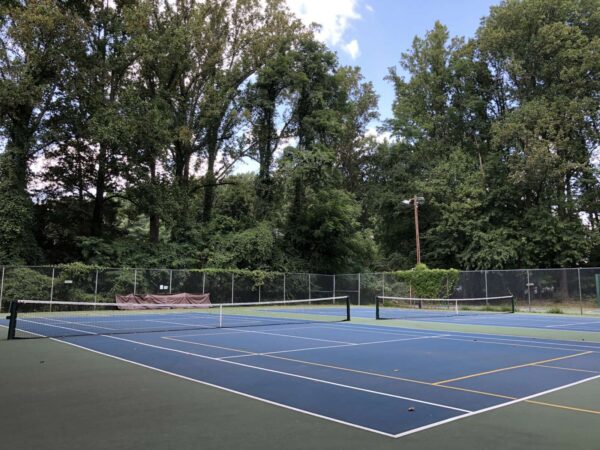
As frustrations persist over the pickleball courts at Glyndon Park, the Vienna Town Council has resorted to appealing to Fairfax County for assistance.
The council voted on June 19 to send the Fairfax County Board of Supervisors a letter asking them to identify potential sites for pickleball near the town, whose only existing facilities — the four courts at Glyndon — have been plagued by noise complaints from neighbors.
“We are asking you to help Fairfax County residents have more options of locations to play pickleball with longer hours,” Mayor Linda Colbert and the town council said in the draft letter. “The county owns facilities near the town that could be used for pickleball. Because of their relative distance from residential neighborhoods, several of those facilities are far better suited to use for pickleball than Town of Vienna owned property.”
Earlier this year, the town reduced the hours when pickleball was permitted at Glyndon Park (300 Glyndon Street) in an effort to alleviate tensions between neighboring residents and local players.
Under the new policy, set open play hours were eliminated, and a reservation system was implemented for players who live in Vienna. The town is also encouraging players to use quieter paddles.
Since the policy took effect on March 1, the Vienna Police Department has received 18 noise complaints about pickleball being played outside the designated hours, Vienna Parks and Recreation Director Leslie Herman reported at a June 5 town council meeting.
Seven of those complaints were determined to be unfounded, and 10 resulted in police issuing a warning. At least four complaints have been made to police since that meeting, according to the VPD’s weekly recaps.
Despite those complaints, residents told town staff that the situation has been more tolerable this spring, and most regular court users seem to be abiding by the rules. The ongoing issues appear to stem from non-regular users who “either ignore the posted rules or do not know the rules,” Herman said.
“The residents feel that the limited number of people due to no open play is a big factor that is helping them tolerate pickleball play,” Herman said. “There is a concern that allowing open play will generate additional noise as the number of players will increase. The issue is not from the ball, but from the amount of people congregating.”
Based on 48 random visits to the park, town staff observed up to 18 people on the courts at one time, but that could increase if open play was encouraged, particularly with the warmer summer weather bringing more people outside, according to Herman.
The Vienna Pickleball Club had requested a return of designated open play hours when anyone can show up and use the courts, reporting some confusion around the reservation system and concerns that newer players are being left out.
From March 1 through May 20, the courts were reserved approximately 37% of the available pickleball times, Herman reported. Read More
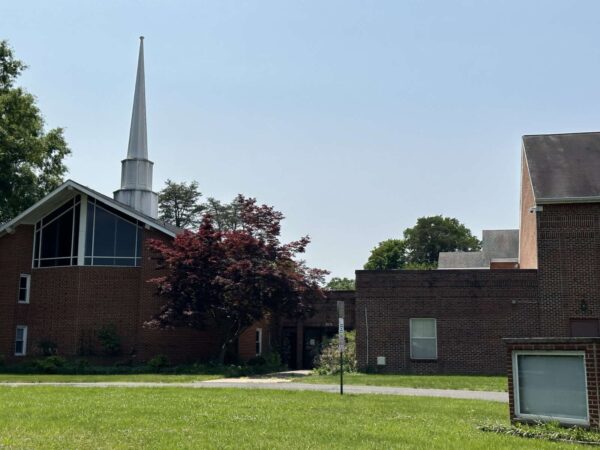
The Faith Baptist Church that has occupied 301 Center Street South in Vienna for about seven decades will officially be torn down.
Faced with increasing maintenance costs, the Vienna Town Council voted unanimously on Monday (June 5) to demolish the entire two-story building, which was originally built in the 1950s, according to Fairfax County records.
The town purchased the 3-acre property in 2020 in part to have a temporary base for the Vienna Police Department during the construction of its new headquarters. Chartered in 1952, the church had opted to close its doors and sell to support the creation of a new network of “connection groups” in Northern Virginia, per its website.
Some council members previously suggested keeping the church’s gym, but that would cost between $2.9 million and $3.3 million, Director of Parks and Recreation Leslie Herman reported in a May 24 memo.
After seeing those new numbers, which exceeded the $1 million that an earlier study estimated would be needed to convert the building into a usable recreational facility, the decision to send the church to “house heaven” became a “no-brainer,” Councilmember Chuck Anderson said.
“I think get the damn building down, because it’s just costing us too much money right now,” Councilmember Howard Springsteen said. “It gives us a clean slate there, and every time we turn around, another price jumps up.”
A total demolition will cost $250,000, according to town staff. The town hasn’t determined yet when the demolition will take place or how long it will take.
“There are still a lot of details that need to be worked out, including the bidding process for a contractor to do the demolition, permitting for demolition, etc., plans for how to use the property once the building comes down,” Vienna Public Information Director Karen Thayer said by email.
The property’s long-term future also remains up in the air.
The council decided to postpone a decision on whether to spend an additional $23,500 on a business planning and operational costs study recommended by consultants Kimmel Bogrette Architecture and Kimley Horn.
Hired in November, the consultants found clear support in the community for turning the site — now called the Annex — into a recreational facility, especially one with a swimming pool or fitness center, based on an online survey and public workshop.
The proposed study would give the town more concrete numbers for the costs and benefits of different recreational uses, Herman said. Read More
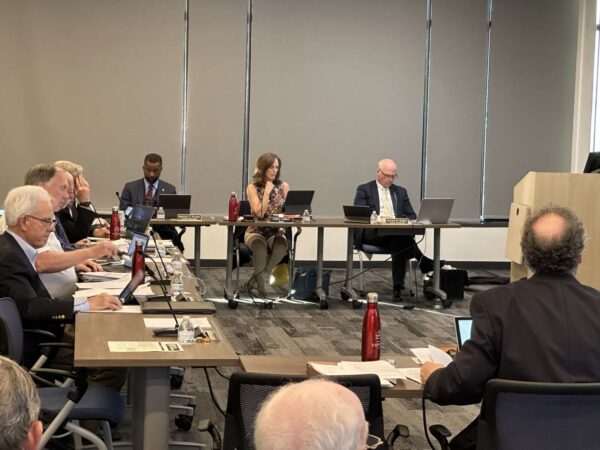
The Town of Vienna has set a tentative timeline for wrapping up the first overhaul of its zoning code since Richard Nixon occupied the White House.
At a May 8 conference session, the Vienna Town Council urged staff to have the rewritten code ready for adoption on Oct. 23 — its final meeting before a new council is elected on Nov. 7.
To meet that deadline, staff will present a complete draft of the new code on June 5 and schedule public hearings for July 10 and 12. Officials with the Department of Planning and Zoning had proposed waiting until late August for the public hearings, since people may be out of town during the summer.
“Staff could…use the summer break to engage with the public and educate them about the contents of the draft, so that they are more able to provide informed testimony,” Planning and Zoning Director David Levy and Deputy Director Kelly O’Brien said in a memo. “While it is likely that many people will be on vacation, staff will provide multiple opportunities both in person and online for citizens to engage when they are available.”
However, the council argued that it would prefer to hear from the public “sooner rather than later” on the update known as Code Create, whose completion was designated as a top priority for 2023.
Faced with a tight timeframe either way, council members noted that July hearings would give staff more time to incorporate the public’s feedback into the final document, and community members could still submit written comments afterwards.
“I think there’s an advantage to going out earlier, because I think I’d like to hear from the public,” Councilmember Ed Somers said.
Before spending over half an hour debating the Code Create schedule, the town council discussed potential new uses in transitional zones — which currently allow little beyond medical offices and massage therapy businesses — and how to handle the mixed-use building at 901 Glyndon Street SE.
The council was particularly split over whether to allow child care centers in transitional zones with a conditional permit. Councilmember Nisha Patel worried that the noise could drive away tenants, while Councilmember Chuck Anderson countered that having child care available in or near their office is a draw for many workers.
Council members suggested creating a zoning district specifically for 901 Glyndon, which is unique in Vienna as a condominium building with ground-floor commercial space in the middle of a single-family residential neighborhood. Town Attorney Steven Briglia warned against “grandfathering” as a “slippery slope.”
“[The building is] always going to be a square peg in a round hole,” he said.
The discussions hinted at the myriad issues that still need to be settled before that Oct. 23 deadline for Code Create, which has been underway since September 2020. The rewrite will shape the town’s future look and development, dictating everything from new zoning districts to lighting standards and bicycle parking requirements.
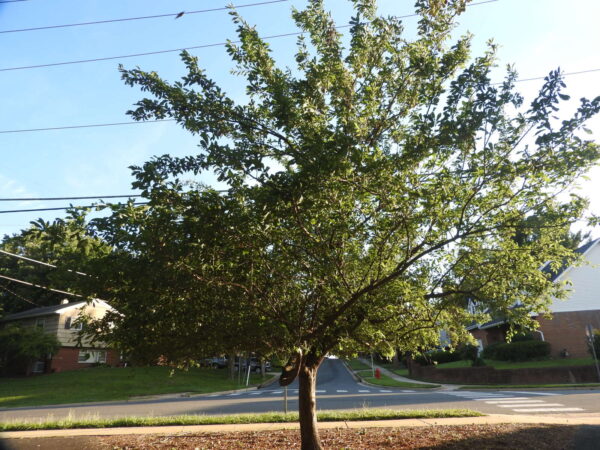
The Town of Vienna is ready to turn over a new leaf in its commitment to tree plantings and preservation.
In the hopes of reversing a significant decline in canopy coverage over the past decade, staff proposed a tree conservation ordinance to the Vienna Town Council last week that would require developers to preserve existing trees when possible.
An ordinance would put the town in line with Fairfax County, which has had conservation rules since the General Assembly extended that authority to Northern Virginia localities in 1990. Right now, Vienna only requires that developers replace eliminated trees to meet canopy standards.
“This is the kind of thing that’s so big, so impactful that I would like to hear from the community on and…is absolutely worthy of a public hearing. It’s a big idea that could have big results,” Councilmember Ed Somers said after the May 8 presentation.
Current canopy requirements vary across zoning districts, but for the single-family residential lots that dominate most of Vienna, builders must provide enough trees to cover at least 20% of the lot after 20 years.
A conservation ordinance would raise that 20-year standard to 25%, require developers to “make an effort” to preserve any trees likely to survive, and let developers unable to meet their on-site canopy requirement contribute to a fund for trees plantings elsewhere in the town.
“If you can’t meet your tree requirements through tree preservation, you supplement that through tree planting, as opposed to what Vienna has right now, where a builder can cut down all the trees if they want and then just replace them with new trees later,” Brian Land, a Vienna resident and Kirkland & Ellis LLP attorney, explained.
The town hired Kirkland & Ellis and the Ramboll US Corporation, a consulting company, in September 2020 for a pro bono project to analyze its tree program and those of other jurisdictions in Virginia.
In addition to a conservation ordinance, the consultants recommend that Vienna create a tree commission to supplement its Conservation and Sustainability Commission and track and publish plantings data on an annual basis.
Town staff have already started to make progress on the tracking recommendation, thanks to a town-wide tree inventory now underway.
Building off an urban tree canopy assessment released in October, the now-complete first phase of the inventory identified 8,640 sites in town that either have a tree or are suitable for future plantings. Of the 7,224 existing trees, 306 were dead, and 689 others were in poor condition, town staff told the council.
Conducted by consultant PlanIT Geo, the project’s second phase will consist of parks that weren’t already surveyed. A final report is expected to be presented to the town council on June 12.
The inventory data, including the health and species of each tree, is being assembled into a dashboard that staff will be able to update in real time and that will be accessible to the public through the town’s website.
While the inventory will provide valuable information, more staff and money are needed to actually plant and maintain trees, Vienna Park Maintenance Superintendent Jeremy Edwards said.
According to Edwards, the town’s annual tree maintenance budget has jumped from $30,000 just two years ago to $80,000 this year, and the council approved $250,000 in federal Covid relief funds for a street tree replacement project on May 1.
However, Vienna has no staff dedicated to tree maintenance, and with hundreds of trees in need of removal or pruning, those funds start to look pretty paltry.
“If trees are important, which I think they are, we do need to build a staff of competent workers that can not just cut trees, but know how to prune them, how to maintain them so we can manage them much better going forward,” Edwards said. “A lot of people can just cut. That’s what we’ve been doing so far, but knowing the proper cuts, that’s the skilled staff we need right now.”
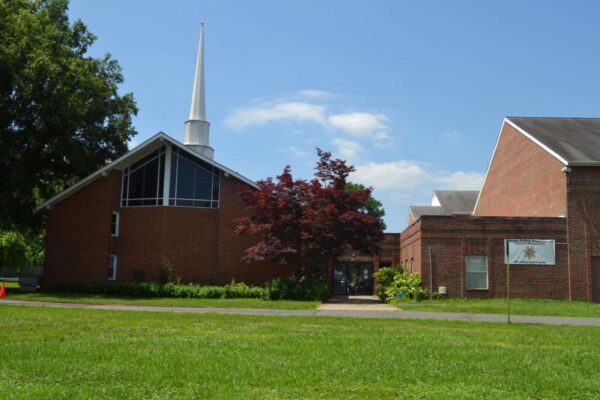
The Vienna Town Council appears inclined to raze the former Faith Baptist Church, as a study continues to sift through ideas for the long-term future of the site now known as the Annex.
A vote on whether to demolish the now-vacant building at 301 Center Street South has been set for June 5. While no decision was made, a majority of council members indicated at a conference session Monday (May 8) that they would rather knock down the structure than invest money in maintaining it.
Council members Howard Springsteen and Ed Somers seemed open to keeping the church gymnasium — another option suggested by the consultants conducting the study — but it was unclear how much that would cost compared to replacing the 1950s-era building with new, temporary recreational facilities.
Martin Kimmel, president of the consulting firm Kimmel Bogrette Architecture + Site, confirmed the team could provide “rough” cost estimates in time for the June vote.
“It’s going to come down to cost,” Councilmember Steve Potter said. “I’m leaning toward don’t put good money into bad. I think the best thing would be to demolish the building, but I’m having a hard time making a decision because we don’t have all the information.”
It will cost about $250,000 to fully demolish the church and remove the resulting debris, town staff estimated.
The town purchased the former church on Aug. 31, 2020, turning it into a temporary base for the Vienna Police Department until its new headquarters was built. The move-in process was completed in January.
After a review found that it would take $500,000 just to bring the existing building up to code, the council commissioned Kimmel Bogrette and fellow consultant Kimley Horn to help the town develop a long-term vision before it makes any short-term commitments.
Based on initial public input, including a still-open online survey and an in-person workshop, community members would love to see recreational amenities of some kind — particularly an indoor pool or other aquatics facility — in the Annex’s future.
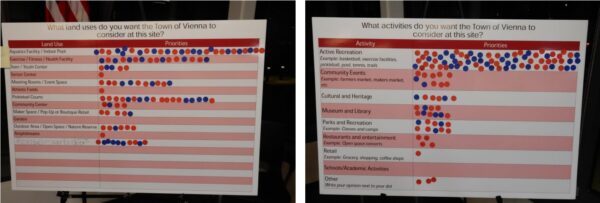
“There was no doubt the word ‘pool’ jumped out” as a use that should be evaluated, Somers said, referencing a word cloud in the consultant team’s presentation.
An exercise or fitness facility, pickleball courts and meeting space also got solid support as potential uses at the March 28 workshop, which was held in the new police station.
With the police station costing about $14.1 million, it will likely be at least a decade before the town can implement another project of that magnitude. That may not be as far off as it seems, given the amount of time needed for planning, design and construction, Town Manager Mercury Payton noted.
Springsteen said a pool seems “cost-prohibitive” when the town already has millions of dollars worth of capital projects to address, from road improvements to sewer upgrades. Other council members suggested all options should remain open until they get a clearer idea of the costs.
Kimmel Bogrette proposed bringing in another consultant that could conduct a market and operational analysis. For an additional $23,500, the analysis would evaluate different possible uses for the site and project potential demand, construction and operational costs, and revenue.
Some council members expressed skepticism at the need for that analysis, though Payton said the consultant would be able to provide a more detailed, informed review than what town staff could manage. The proposal will come up for a vote on June 5.
“I don’t know what we’d wait for. We have to know what the costs are,” Mayor Linda Colbert said.
In the meantime, Kimmel’s study will proceed with more community engagement events at the Vienna Community Center from 4-7 p.m. today (Wednesday) and from 10 a.m.-2 p.m. on Saturday (May 13).
A final recommendation is scheduled to be presented to the council on June 12.
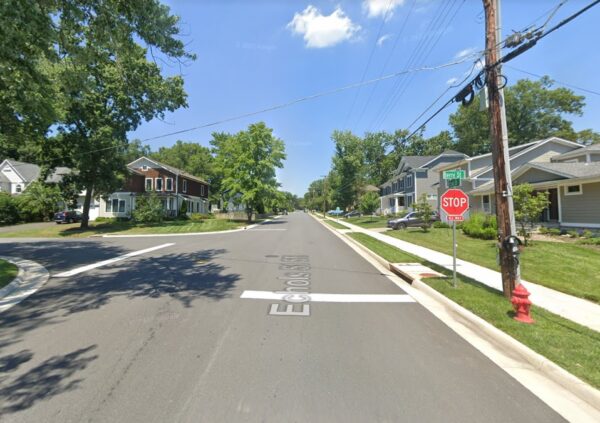
The drive down Echols Street SE is about to get bumpier — and, the Town of Vienna hopes, a little slower.
After some initial skepticism, the Vienna Town Council gave its support on April 24 to traffic-calming measures designed to force drivers to slow down on the two-lane residential street, which crosses over Wolftrap Creek.
Town staff and the Transportation Safety Commission recommended installing three speed tables between Branch Road SE and Follin Lane, adding solid white parking lane lines on both sides of the roadway, and painting the word “Stop” before the three-way stop sign at the Berry Street SE intersection.
The recommendations are based on a traffic study conducted last year that showed 85% of vehicles driving up to 31 mph on the 25-mph street, Vienna’s acting public works director Christine Horner told the town council.
Some council members questioned whether those speeds are enough to need traffic calming.
“I’ve gone to the street a couple of times,” Councilmember Howard Springsteen said. “I personally would prefer to go with two [speed tables]. I think three is potentially excessive for that street.”
Echols Street just meets Vienna’s threshold for traffic calming, staff said. The town’s street safety guide states that physical measures can be considered if the 85th percentile average speed is 31 mph or higher, along with other criteria based on the type of road and traffic volumes.
Vienna Transportation Engineer Andrew Jinks noted that there was an additional police presence on the street when the traffic study was conducted on Nov. 3-10 last year, so typical speeds are likely higher than what was recorded.
Requested by a resident petition, the study counted a total of 3,765 vehicles in front of 509 Echols Street and 18,250 vehicles at the Wolftrap Creek crossing that week, observing speeds from 3 to 55 mph. The average speed at the creek was 27.2 mph.
“Basically, half the cars are going above the speed limit,” Councilmember Ray Brill observed.
According to a staff proposal, the speed tables will be located just before the Delano Drive SE intersection and on either side of the E Street intersection.
Speed tables are raised like speed bumps, but they’re wider and have a flat top, making them less disruptive to the passing vehicles. They can reduce speeds by around 6-9 mph on average, according to the Virginia Department of Transportation’s traffic calming guide.
Multiple tables are often needed for them to be effective, Jinks said. VDOT recommends placing the tables about 200 to 500 feet apart.
“If staff says it takes three to get the proper spacing to make an effect, I have to defer to staff on this,” Councilmember Chuck Anderson said, as Springsteen ultimately agreed.
The project has an estimated total cost of $20,000, including $6,000 for each of the speed tables, according to Jinks. The traffic calming devices will likely be installed within the next two to three months, a town spokesperson says.
Image via Google Maps

